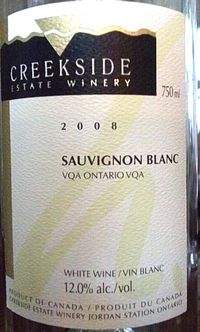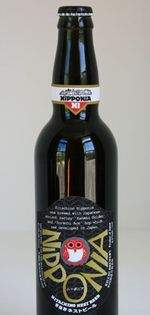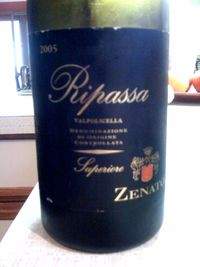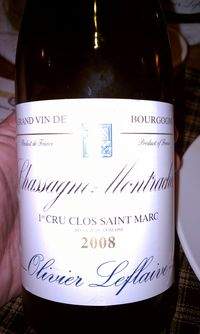This is what our editors and contributors were drinking last week….
 Bryan Calandrelli: Creekside Estate Winery Sauvignon Blanc 2008, Ontario
Bryan Calandrelli: Creekside Estate Winery Sauvignon Blanc 2008, Ontario
When I think of Niagara — Ontario or New York — whites usually its chardonnay and riesling that come to mind. Both are obviously cool climate and are pretty consistent from winery to winery.
That doesn't mean that grapes like sauvignon blanc, viognier and chenin blanc aren't common though. In fact the majority of Ontario wineries make a sauvignon blanc and many use oak aging as well.
This Creekside Estate Sauvignon Blanc 2008 from Ontario is a fine example of how well this variety can do here. Forward aromas of grapefruit, pineapple and chalk come through in this $13 gem.
The talented winemaking and viticulture team at Creekside were kind enough to leave out the cat piss and over the top grassy flavors that I generally avoid.
It's near perfect balance, modest weight and round feel is such a surprise for a wine at this price point. I've had a handful of great sauvignon blancs from other local wineries including Peninsula Ridge and Ravine that have convinced me of the grape¹s potential but they usually fetch $20 or more.
Creekside seems able to turn out quality and keep the price competitive. Cheers to that!
 David Flaherty: Ancient Nipponia, Hitichino Nest, Kiuchi Brewery, Japan
David Flaherty: Ancient Nipponia, Hitichino Nest, Kiuchi Brewery, Japan
Talk about evolution. From Sake brewery to beer brewery and now with some dabbling in winemaking (they have merlot and chardonnay planted on the property), Kiuchi Brewery is on a roll and gathering steam. Established in 1823 as a producer of high-quality, traditional Sake, they later added beer making to their roster in 1996.
With their wisely cute little owl logo, they've quickly become recognizable to beer drinkers all around the world. Look out Ronald McDonald, the owl is coming for you and he means business.
A new offering this year from Hitichino Nest (the name the Kiuchi Brewery uses for its beers), The Ancient Nipponia is meant to capture the taste and spirit of Japan.
Technically a Belgian Pale Ale, the Ancient Nipponia reminded me of a saison but then took me for an unsuspecting turn. Made with a cross-pollination between the European Golden Melon and the Japanese barley malt Shikoku, the new malt strain was thought to have disappeared from the scene about 50 years ago. However, Kiuchi acquired some seeds and began planting them in a small garden about 5 years ago. Also using the Sorachi Ace hop (a strain originally created by Sapporo), this beer is an all-Japanese creation.
I'm beginning to like the little owl. Now if only I could say the same about Ronald…
When you're feeling the urge for a guilty pleasure wine — maybe a monstrous, jammy California cabernet, for example — I'd humbly suggest a high-value alternative. When Valpolicella is done well, it can deliver excellent QPR. And the best versions are done in the ripasso style.
This wine is a wonderful example. It's unabashedly jammy and flirtatious, proudly voluptuous. It's the short skirt-clad woman at the bar, utterly lacking timidity and willing to kiss you in front of your friends. It gives away almost nothing in the way of acid, but a balanced, elegant wine is not the point.
Not oaky but brushed up a little with wood, this is hardly complex but also extremely well made. The Ripasso style offers more weight, and some like to call this style a "baby Amarone." Maybe. There's raisin here, but plenty more.
I can't drink these wines every night. But when the urge strikes, I find them much more interesting and happily mouth-filling than many other ostensibly "serious" wines.
For many years I've been tasting "Burgundian" chardonnays being made in New York. And for years I've been doing so with only limited experience actually tasting White Burgundy — at least examples with any sort of pedigree.
Last night — thanks to a Twitter-based tasting sponsored by Fredrick Wildman & Sons — I had the opportunity to taste four such wines from Olivier Leflaive raning from $52 to $102.
My favorite of the group, the Olivier Leflaive 2008 1er Cru Clos St. Marc Chassagne-Montrachet, retails for $90 and nothing could be more depressing. At that price, it will be a special occasion indeed that I get to enjoy the focused elegance of this rich-but-balanced, lengthy chardonnay that combines subtle nuttiness, lemon and just-ripe pear flavors with chalky minerality.
I know what local producers mean when they use "Burgundian" to describe their barrel aged chardonnay, but now I know a bit more about what White Burgundy really tastes like.


